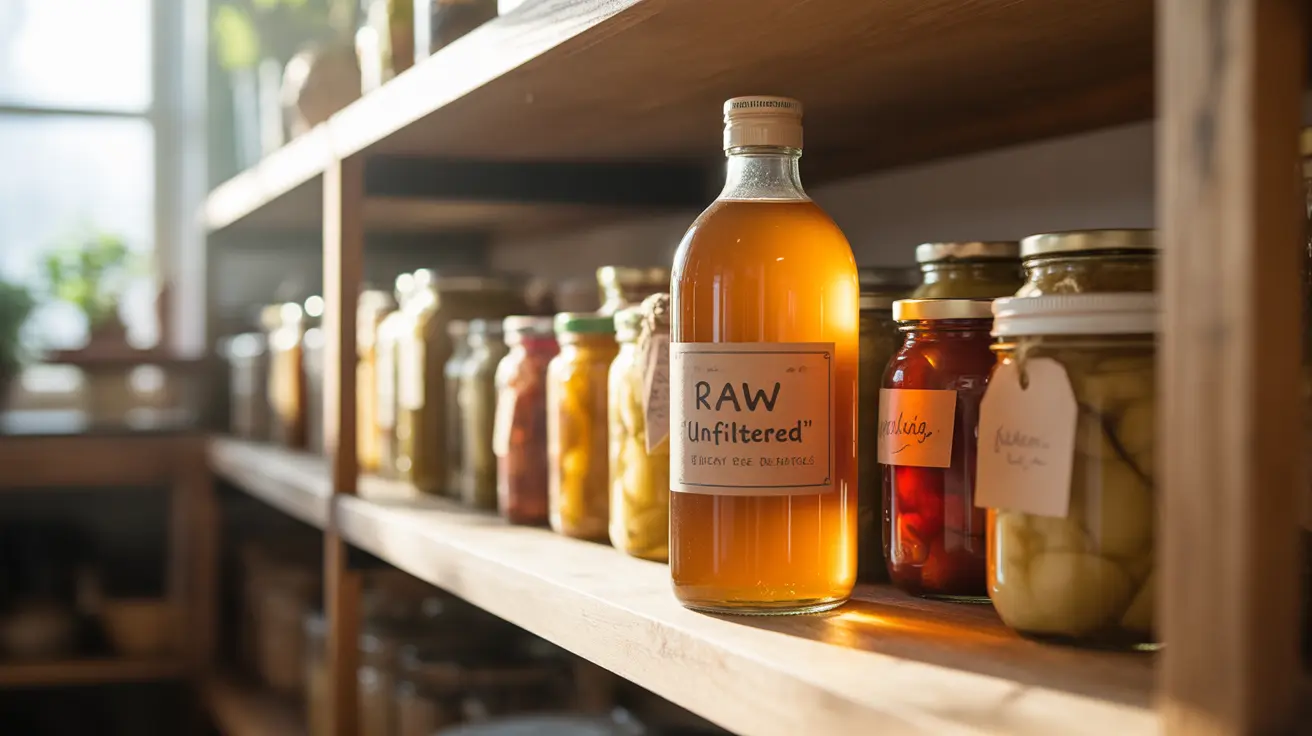Apple cider vinegar has become a pantry staple for many health-conscious individuals, but questions often arise about its longevity and storage requirements. Understanding how to properly store and identify signs of spoilage in apple cider vinegar is crucial for maintaining its quality and ensuring safe consumption.
While apple cider vinegar is known for its impressive shelf life due to its high acidity, certain factors can affect its quality over time. Let's explore everything you need to know about apple cider vinegar's shelf life, storage methods, and how to tell if it's still good to use.
Understanding Apple Cider Vinegar's Shelf Life
Apple cider vinegar is naturally self-preserving due to its high acetic acid content, which typically ranges between 4-8%. This acidic environment makes it extremely difficult for harmful bacteria to grow, contributing to its extended shelf life.
When properly stored, unopened apple cider vinegar can last indefinitely. Even after opening, it can maintain its quality for 2-5 years when stored correctly. However, the quality may gradually decline over time, affecting its flavor and potency.
Signs of Quality Changes in Apple Cider Vinegar
While apple cider vinegar rarely "goes bad" in terms of becoming unsafe to consume, there are several indicators that its quality might have changed:
- Changes in clarity or color
- Formation of sediment or cloudiness
- Development of a stronger, more sour smell
- Presence of mold (extremely rare but possible if contaminated)
The "mother" culture - a beneficial combination of bacteria and enzymes - may appear as a cloudy substance or strand-like formation. This is completely normal and actually indicates the vinegar's natural, unfiltered state.
Proper Storage Guidelines
Temperature and Location
Store apple cider vinegar in a cool, dark place away from direct sunlight. The ideal storage temperature is between 50-70°F (10-21°C). Suitable storage locations include:
- Kitchen pantry
- Cabinet away from heat sources
- Cool basement storage area
- Dark cupboard
Container Considerations
Keep apple cider vinegar in its original glass or food-grade plastic container with a tight-fitting lid. If transferring to another container, ensure it's made of glass or food-grade plastic, as metal containers can react with the acid.
Maximizing Shelf Life
To maintain apple cider vinegar's quality for as long as possible:
- Always seal the bottle tightly after use
- Use clean utensils when handling
- Avoid contamination with water or other substances
- Keep away from heat sources and direct sunlight
- Don't transfer to metal containers
Frequently Asked Questions
1. Can apple cider vinegar go bad or expire over time? While apple cider vinegar doesn't typically "go bad," its quality can deteriorate over time. Properly stored, it can maintain its quality for several years after opening.
2. What changes in appearance or smell mean apple cider vinegar has spoiled? Look for unusual changes in color, clarity, or smell beyond the normal presence of the "mother." If you see mold or notice off-putting odors, it's best to discard the vinegar.
3. How should I store apple cider vinegar to keep it fresh for longer? Store in a cool, dark place away from direct sunlight and heat sources. Keep it in its original container or a glass bottle with a tight-fitting lid.
4. Is it safe to use apple cider vinegar past its expiration date? Yes, it's generally safe to use apple cider vinegar past its expiration date. The date on the bottle is more about quality than safety, given the product's natural preservation properties.
5. Does apple cider vinegar need refrigeration after opening? No, refrigeration isn't necessary. Apple cider vinegar can be stored at room temperature in a dark, cool place.




